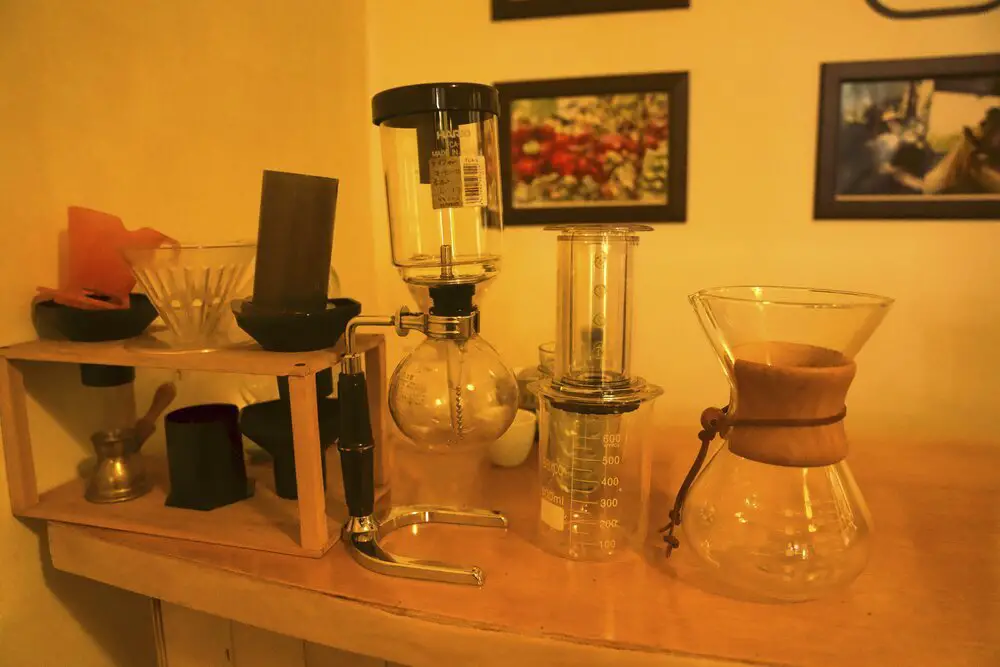Table of Contents
Steam coffee maker
The steam coffee maker, also known as a hydro-pressure or semi-express coffee maker, is a type of coffee maker that prepares espresso but with a much lighter touch.
This coffee maker is mid-range in terms of both coffee taste and price, making it an interesting option. For this reason, a steam coffee machine is a product with very clear objectives:
- Production of a coffee that tastes somewhere between a drip coffee and a traditional espresso.
- To give the barista or machine operator the opportunity to experiment by controlling aspects such as the coffee extraction time and the pressure achieved. Added to this is the ability to froth milk, which is included in most versions.
- A quick preparation in less than 5 minutes, which in turn is easy since the machine does not have a large number of buttons, only the basic functions that are contained within it.
Materials of a steam coffee machine
As with any product, the materials used have an impact on the price. However, the most popular models are made of the following materials:
Metal
Most internal parts are made of metal. These can be made of stainless steel, aluminum or brass.
Wood
This material is used for the lever handles, although not all steam coffee machines have levers.
Plastic
This is the most common material used in coffee machines, especially the most affordable models. Its main function is to cover the internal mechanisms.
Hardened glass
If a carafe is available, it is usually made of glass or tempered glass that can withstand high temperatures.
Steam coffee maker vs espresso coffee maker
It is well known that coffee prepared with a water pressure coffee machine is a light espresso. So, it’s normal to wonder what the differences are or which machine to choose.
In fact, the usage of these two machines is quite similar. However, there are also big differences.
Differences between a steam coffee machine and an espresso machine
Pressure
The first difference is in the pressure they can achieve. Espresso machines range from 9 to 15 or even 19 bar. Hydraulic pressure machines reach a maximum of 5 bar.
Pressure system
The huge difference in pressure achieved is due to the technology used. Espresso machines have a pump that puts pressure on the water and brews the coffee faster. The semi-espresso machines, on the other hand, generate the pressure through the temperature of the water and the mechanisms used, such as levers or pistons.
Result
The classic espresso is frothy, full-bodied and has a strong flavor because it contains a high concentration of coffee in very little liquid. The light espresso made with steam machines has a similar taste but no foam. In addition, both its flavor and body are milder.
Price
High pressure coffee makers tend to be cheaper because they are easier to use.
Size
Steam coffee makers are easier to use and tend to be more compact in size, which is great for small spaces.
Capacity
The capacity depends on the size of the tank, espresso machines usually have a larger tank. In addition, it must be considered that with steam machines some of the water is lost through evaporation, so the initial amount of water and the final amount of coffee are not comparable.
Vessels
Steam coffee machines require an external carafe into which the brewed coffee is placed. With espresso machines, on the other hand, the entire preparation takes place in the machine, so that the coffee can be served directly in the cup.
Performance and power consumption
Espresso machines use more electricity and energy because their operation is more demanding; consumption is around 1000 watts. Semi-automatic coffee machines, on the other hand, consume around 800 watts on average.
Filter
Espresso machines require two independent and different filters. Steam coffee machines only need one.
Similarities between a steam coffee machine and an espresso machine
Since these are products with different focuses, there aren’t many similarities, but there are:
First, consider that steam coffee machines are inspired by espresso machines.
Type of coffee
It is recommended to use the same type of coffee, but pay attention to the grind size, as the contact time between water and coffee is different in both cases.
Uses of the coffee machines
The use of the two products is very similar. With both, the coffee is put in the filter, pressed, placed in the room, the tank is filled with water and the coffee maker is turned on (the procedures differ from there).


